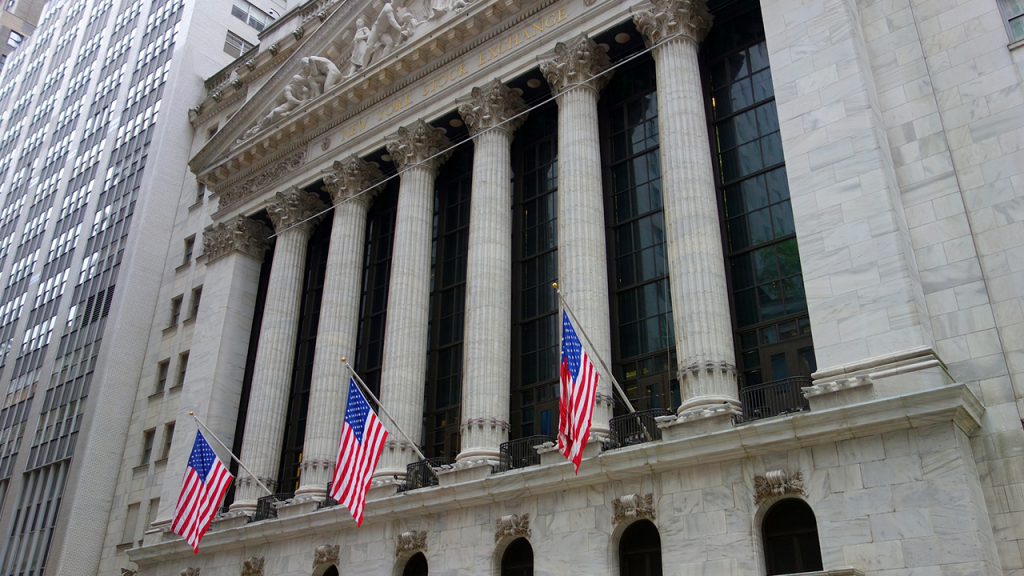Global Financial Data has eliminated the exchange bias.
Other stock databases limit themselves to providing data from the national exchanges, ignoring thousands of local companies that investors in the past would have considered when making their investments. Just as analysts and researchers want to avoid the survivorship bias of ignoring companies that have delisted, researchers and analysts should also avoid the exchange bias of ignoring the thousands of companies that listed on the regional, but not the national exchanges.- Baltimore –1803-1862, 1878-1949. In 1949, the Baltimore Stock Exchange merged into the Philadelphia Stock Exchange and ceased to exist.
- Boston—1789-1972. Boston was one of the premier stock exchanges up until World War I. Many New England manufacturing companies listed exclusively on the Boston SE.
- Chicago—1889-1949. Chicago provided listings for many local companies which went on to list on the New York Stock Exchange and New York Curb and was one of the largest exchanges in the US before World War II. The Chicago SE merged with several other stock exchanges in 1949 to form the Midwest Stock Exchange.
- Cincinnati—1912-1941. This was one of the smaller, regional exchanges.
- Cleveland—1912-1949. The Cleveland Stock Exchange merged into the Midwest Stock Exchange in 1949.
- Detroit—1926-1972. Many companies related to the auto industry listed on the Detroit SE.
- Los Angeles—1924-1956. Many local oil and mining companies listed on the Los Angeles SE. It merged into the Pacific Stock Exchange in 1956.
- Midwest Stock Exchange—1949-1972. This was the successor to the Chicago, Cleveland, New Orleans and St. Louis Stock Exchanges.
- New Orleans Stock Exchange—1810-1858, 1912-1931. This was a small, regional exchange that merged into the Midwest Stock Exchange in 1949.
- Pacific Stock Exchange—1956-1972. This was the successor to the Los Angeles and San Francisco Stock Exchanges. The exchange was acquired by Archipelago in 2005.
- Philadelphia Stock Exchange—1786-1850, 1878-1972. In the early 1800s, the Philadelphia SE was larger than the New York SE. Along with the New York and Boston SE, it remained one of the premier exchanges in the United States throughout the 1800s. It absorbed the Baltimore SE in 1949, the Washington SE in 1954 and the Pittsburgh SE in 1970.
- Pittsburgh Stock Exchange—1908-1970. A small regional exchange with many companies in the steel industry. It merged into the Philadelphia SE in 1970.
- San Francisco Stock Exchange—1905-1956. The San Francisco SE provided data on many local utility, oil and mining companies, and merged into the Pacific SE in 1956.
- St. Louis Stock Exchange—1912-1941. The St. Louis SE listed a number of apparel companies and merged into the Midwest SE in 1949.
- Washington Stock Exchange—1900-1931. This is a smaller regional exchange which merged into the Philadelphia SE in 1954.
 Confederate bonds are now prized by collectors of Confederate memorabilia. Since the bonds were never redeemed, thousands of these remnants of the South still exist for anyone to own.
One of the more interesting bonds produced by the Confederacy were the Erlanger bonds which were issued in London in an attempt to raise much needed foreign currency for the Confederacy. These bonds were authorized by an Act of the Confederacy on January 29, 1863, and were the only bonds issued in foreign markets by the Confederacy. One of the more interesting aspects of these bonds is that they were Cotton Loan Bonds, backed by and redeemable in bales of cotton.
The reason for issuing Cotton Loan Bonds was that anyone who bought Confederate bonds faced the risk of default if the Confederacy lost the war. Even if the Confederate States were to survive the war, the Confederacy lacked the gold reserves requisite to back the bonds. However, the South had plenty of cotton, a commodity that was essential to the mills in England and the rest of Europe.
The Cotton Loan Bonds which were backed by bales of Confederate “white gold” at a price that would provide a profit to potential buyers if the bonds were paid off in kind rather than in cash. The £100 bonds (about $485 in gold before the war) were redeemable for 8 bales (4000 pounds) of cotton. Additional bonds were issued at £250, £500 and £1000. The bonds paid 7% interest and were redeemable in 20 years.
The Erlanger bonds traded on both the London and the Amsterdam Stock Exchanges. The performance of the bonds reflected traders’ faith in the Confederacy. Declines in the value of the bonds occurred as the war turned against the Confederacy, and it became more evident that the Confederacy would lose the war and be unable to redeem the bonds.
A similar indicator of faith in the Confederacy is reflected in the gold premium for the Confederate Dollar. At the beginning of the war, one paper Confederate Dollar was redeemable for one dollar in gold, but as the war progressed, the premium on gold rose. As you can see in the graph below, the Confederate Dollar depreciated consistently against gold during the war. Initially, this decline was due to inflation in the Confederacy since it was funding the war primarily through paper money and through issuing bonds. Toward the end of the war, the risk of default drove the rise in the gold premium.
The conversion rate for “bluebacks” as the Confederate currency was known, rose from 1.2 Confederate Dollars to a Gold Dollar at the beginning of 1862 to 3.25 at the beginning of 1863, 20 at the beginning of 1864, and 60 at the beginning of 1865. By April 1, 1865, just a week before the peace treaty was signed at Appomattox, the rate was at 70. After the South surrendered, the rate quickly collapsed, hitting 1500 by May 1, 1865. This can be seen in the graph below.
Confederate bonds are now prized by collectors of Confederate memorabilia. Since the bonds were never redeemed, thousands of these remnants of the South still exist for anyone to own.
One of the more interesting bonds produced by the Confederacy were the Erlanger bonds which were issued in London in an attempt to raise much needed foreign currency for the Confederacy. These bonds were authorized by an Act of the Confederacy on January 29, 1863, and were the only bonds issued in foreign markets by the Confederacy. One of the more interesting aspects of these bonds is that they were Cotton Loan Bonds, backed by and redeemable in bales of cotton.
The reason for issuing Cotton Loan Bonds was that anyone who bought Confederate bonds faced the risk of default if the Confederacy lost the war. Even if the Confederate States were to survive the war, the Confederacy lacked the gold reserves requisite to back the bonds. However, the South had plenty of cotton, a commodity that was essential to the mills in England and the rest of Europe.
The Cotton Loan Bonds which were backed by bales of Confederate “white gold” at a price that would provide a profit to potential buyers if the bonds were paid off in kind rather than in cash. The £100 bonds (about $485 in gold before the war) were redeemable for 8 bales (4000 pounds) of cotton. Additional bonds were issued at £250, £500 and £1000. The bonds paid 7% interest and were redeemable in 20 years.
The Erlanger bonds traded on both the London and the Amsterdam Stock Exchanges. The performance of the bonds reflected traders’ faith in the Confederacy. Declines in the value of the bonds occurred as the war turned against the Confederacy, and it became more evident that the Confederacy would lose the war and be unable to redeem the bonds.
A similar indicator of faith in the Confederacy is reflected in the gold premium for the Confederate Dollar. At the beginning of the war, one paper Confederate Dollar was redeemable for one dollar in gold, but as the war progressed, the premium on gold rose. As you can see in the graph below, the Confederate Dollar depreciated consistently against gold during the war. Initially, this decline was due to inflation in the Confederacy since it was funding the war primarily through paper money and through issuing bonds. Toward the end of the war, the risk of default drove the rise in the gold premium.
The conversion rate for “bluebacks” as the Confederate currency was known, rose from 1.2 Confederate Dollars to a Gold Dollar at the beginning of 1862 to 3.25 at the beginning of 1863, 20 at the beginning of 1864, and 60 at the beginning of 1865. By April 1, 1865, just a week before the peace treaty was signed at Appomattox, the rate was at 70. After the South surrendered, the rate quickly collapsed, hitting 1500 by May 1, 1865. This can be seen in the graph below.
Changes in the price of the Erlanger bonds also reflected the declining fortunes of the Confederacy. Surprisingly, the Erlanger bonds continued to trade on the London Stock Exchange for years after the war was over out of hope that the Federal Government would redeem the bonds either in full or in part, or at least provide the cotton that had been promised by the Cotton Loan.
The United States Federal Government was adamant that it would not redeem any Confederate Bonds, State Bonds, Confederate Currency or State Currency that had been issued during the war. The Fourteenth Amendment to the Constitution was passed on July 9, 1868 and Section 4 of the Fourteenth Amendment explicitly stated that “Neither the United States nor any State shall assume or pay any debt or obligation incurred in aid of insurrection or rebellion against the United States, or any claim for the loss or emancipation of any slave; but all such debts, obligations and claims shall be held illegal and void.”
Which country has the dubious distinction of suffering the worst bear market in history?
To answer this question, we ignore countries where the government closed down the stock exchange, leaving investors with nothing, as occurred in Russia in 1917 or Eastern European countries after World War II. We focus on stock markets that continued to operate during their equity-destroying disaster. There is a lot of competition in this category. Almost every major country has had a bear market in which share prices have dropped over 80%, and some countries have had drops of over 90%. The Dow Jones Industrial Average dropped 89% between 1929 and 1932, the Greek Stock market fell 92.5% between 1999 and 2012, and adjusted for inflation, Germany’s stock market fell over 97% between 1918 and 1922. The only consolation to investors is that the maximum loss on their investment is 100%, and one country almost achieved that dubious distinction. Cyprus holds the record for the worst bear market of all time in which investors have lost over 99% of their investment! Remember, this loss isn’t for one stock, but for all the shares listed on the stock exchange. The Cyprus Stock Exchange All Share Index hit a high of 11443 on November 29, 1999, fell to 938 by October 25, 2004, a 91.8% drop. The index then rallied back to 5518 by October 31, 2007 before dropping to 691 on March 6, 2009. Another rally ensued to October 20, 2009 when the index hit 2100, but collapsed from there to 91 on October 24, 2013. The chart below makes any roller-coaster ride look boring by comparison.
The fall from 11443 to 91 means that someone who invested at the top in 1999 would have lost 99.2% of their investment by 2013. And remember, this is for ALL the shares listed on the Cyprus Stock Exchange. By definition, some companies underperform the average and have done even worse, losing their shareholders everything.
For the people in Cyprus, this achievement only adds insult to injury. One year ago, in March 2013, Cyprus became the fifth Euro country to have its financial system rescued by a bail-out. At its height, the banking system’s assets were nine times the island’s GDP. As was the case in Iceland, that situation was unsustainable.
 One of the long-term components of the Dow Jones Industrial Average has been IBM. The company was originally added to the Dow Jones Industrials on March 26, 1932 in a reshuffle involving eight stocks including Coca-Cola, Nash Motors (later American Motors) and Proctor & Gamble. On March 13, 1939, however, both IBM and Nash Motors were removed from the average and replaced by American Telephone & Telegraph and United Aircraft Corp. (now United Technologies).
AT&T was in the Dow Jones Utilities Average until June 1, 1938. Until then, the Dow committee had interpreted utilities in a broader sense to include electric, gas, and communications companies as providers of essential services. In 1938, the Dow Jones committee decided to restrict membership in the Utilities Average to power utilities.
The resulting reshuffle removed nine stocks, including AT&T, International Telephone & Telegraph, and Western Union, all of which were communications utilities rather than power utilities, from the Dow Jones Utilities Average. Since AT&T was such a huge company, it was moved over to the Dow Jones Industrial Average which required that another stock be removed to make room for AT&T. Thus, IBM was kicked out of the Dow Jones Industrial Average.
What if the Dow Jones committee had not redefined the Utilities Average to only include power utilities? What if IBM had stayed in the Dow Jones Industrial Average between March 13, 1939 when it was removed and June 29, 1979 when IBM replaced Chrysler in the Dow Jones Industrials? Obviously, the Dow Jones Industrials would be higher than it is today, but how much higher?
International Business Machines incorporated on June 16, 1911 as The Computer-Tabulating-Recording Co., a merger of The Computing Scale Company of America, The Tabulating Machine Company and The International Time Recording Company of New York. The company listed on the NYSE in November 1915, and on February 14, 1924, the company acquired International Business Machines and changed its name in a reverse acquisition.
IBM has been one of the best performers on the stock exchange in history. If you had invested $1 in IBM when it started trading OTC in August 1911, it would have grown to $40,000 today on a price basis. If you had reinvested your dividends, your $1 investment would have grown to $1,434,300. In the past 100 years, IBM has given over a million-fold return. The graph below shows the performance of IBM stock over the past 100 years.
One of the long-term components of the Dow Jones Industrial Average has been IBM. The company was originally added to the Dow Jones Industrials on March 26, 1932 in a reshuffle involving eight stocks including Coca-Cola, Nash Motors (later American Motors) and Proctor & Gamble. On March 13, 1939, however, both IBM and Nash Motors were removed from the average and replaced by American Telephone & Telegraph and United Aircraft Corp. (now United Technologies).
AT&T was in the Dow Jones Utilities Average until June 1, 1938. Until then, the Dow committee had interpreted utilities in a broader sense to include electric, gas, and communications companies as providers of essential services. In 1938, the Dow Jones committee decided to restrict membership in the Utilities Average to power utilities.
The resulting reshuffle removed nine stocks, including AT&T, International Telephone & Telegraph, and Western Union, all of which were communications utilities rather than power utilities, from the Dow Jones Utilities Average. Since AT&T was such a huge company, it was moved over to the Dow Jones Industrial Average which required that another stock be removed to make room for AT&T. Thus, IBM was kicked out of the Dow Jones Industrial Average.
What if the Dow Jones committee had not redefined the Utilities Average to only include power utilities? What if IBM had stayed in the Dow Jones Industrial Average between March 13, 1939 when it was removed and June 29, 1979 when IBM replaced Chrysler in the Dow Jones Industrials? Obviously, the Dow Jones Industrials would be higher than it is today, but how much higher?
International Business Machines incorporated on June 16, 1911 as The Computer-Tabulating-Recording Co., a merger of The Computing Scale Company of America, The Tabulating Machine Company and The International Time Recording Company of New York. The company listed on the NYSE in November 1915, and on February 14, 1924, the company acquired International Business Machines and changed its name in a reverse acquisition.
IBM has been one of the best performers on the stock exchange in history. If you had invested $1 in IBM when it started trading OTC in August 1911, it would have grown to $40,000 today on a price basis. If you had reinvested your dividends, your $1 investment would have grown to $1,434,300. In the past 100 years, IBM has given over a million-fold return. The graph below shows the performance of IBM stock over the past 100 years.
AT&T incorporated in New York on March 3, 1885 and began trading on the NYSE in May 1900 after it had acquired American Bell Telephone Co. in March 1900. The company was forced to split up into “Ma Bell” and the “Baby Bells” by the U.S. Government on December 31, 1983. On November 18, 2005, AT&T Corp. (“Ma Bell”) was acquired by one of the Baby Bells, SBC Communications, which then changed its name to AT&T Inc. in a reverse acquisition.
AT&T has not performed as well as IBM over the past 100 years. If you had invested $1 in AT&T in May 1900, your investment would have grown to only $4.26 on a price basis, or $639 if you had reinvested all of your dividends back in the company, by the time AT&T was broken up in February 1984.
The DJIA stood at 151.1 on March 14, 1939 and 841.98 on June 29, 1979. Since the DJIA is price weighted, you can remove the impact of AT&T on the DJIA by subtracting out the price of AT&T allowing for the splits, and replacing this amount with the value of IBM stock, allowing for the splits in IBM. If you do this, you would find that the DJIA would have been at 23,582 in June 1979, not 841.98. In other words, IBM would have added 22,740 points to the DJIA had it never been removed.




